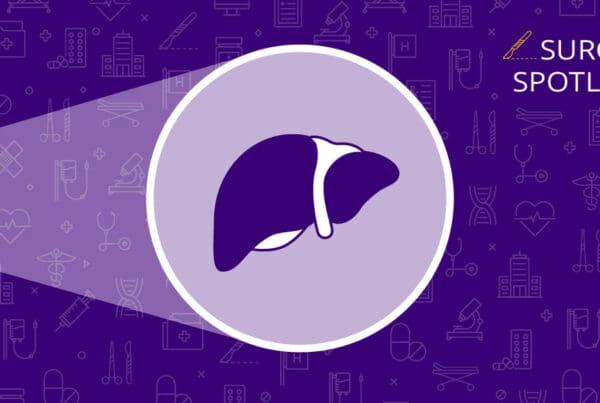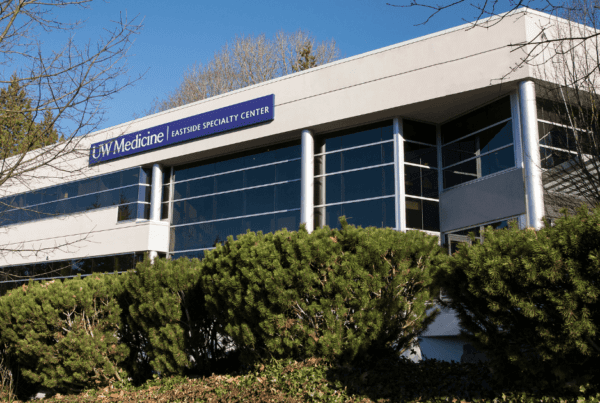Highlights | An uncommon diagnosis
- Leprosy, or Hansen’s disease, is an uncommon, curable condition that many people don’t realize still exists.
- The Hansen’s Disease Clinic at Harborview is one of the original federally funded clinics in the U.S.
- The clinic treats people with the disease and works to destroy the associated stigmas.
Every month, the Hansen’s Disease Clinic at Harborview Medical Center gets at least one new patient who has been diagnosed with leprosy. And yes: The disease, though not very prevalent in the U.S., still exists.
In fact, James Harnisch, MD, clinical professor in the Division of Dermatology at the UW School of Medicine and former director of the Hansen’s Disease Clinic at Harborview Medical Center, has been treating the condition since 1972.
The disease is called both leprosy and Hansen’s disease, which is named after Norwegian doctor Gerhard Armauer Hansen who discovered that the disease is caused by a slow-growing bacteria called Mycobacterium leprae. Harnisch explains that though physicians use both terms (since leprosy is part of their medical vocabulary), many patients prefer Hansen’s disease because it sounds less scary and has less stigma attached. “Leper,” he emphasizes, is a term that should never be used.
Hansen’s disease affects the nerves, skin, eyes and nose and can cause severe nerve damage if left untreated (like paralysis and blindness). However, it does not spread that easily, and treatments can successfully cure the infection and prevent disability — especially if it’s recognized early on.
Hansen’s disease and the world
Though 95% of people are naturally immune to Hansen’s disease and cannot catch it, there are still many cases that crop up around the world — particularly in places where crowded conditions and economic hardships increase the likelihood of transmission. The World Health Organization (WHO) reported more than 200,000 cases worldwide in 2019, with most new diagnoses coming from India, Brazil and Indonesia. The United States has around 200 new cases of Hansen’s disease each year, mostly occurring in states with concentrated communities of immigrants from countries with higher rates of the disease.
Treatment for Hansen’s disease in the United States
Treatment for Hansen’s disease has a long, somewhat sordid history in the United States. Before much was known about the disease (or how to successfully treat it), patients were hidden away — incarcerated in institutions, away from society.
Though now we know that transmission is very low, at the time, the public feared catching the disease, especially after seeing the disfiguring symptoms — like limb deformity, loss of eyebrows and lashes, skin lesions, and even blindness — that some people developed.
The U.S. government established a National Leprosarium in Carville, Louisiana in 1917, which became home to many people with the disease for decades and has since been turned into a national museum.
In the early 1980s the federal government created separate Hansen’s disease clinics around the country, since the disease was now curable with the help of a multidrug treatment regimen over a couple of years.
“They realized that people with Hansen’s disease could be treated closer to home, instead of having to go all the way to Louisiana. They created the National Hansen’s Disease Program and set up centers around the states, where people who knew how to treat the disease could help patients,” says Harnisch.
Those clinics were in places like Los Angeles, Boston, New York, Atlanta, Miami, Dallas, Chicago, San Diego and, of course, Seattle. The Hansen’s Disease Clinic at Harborview Medical Center is one of those original federally funded clinics.
The Hansen’s Disease Clinic at Harborview
This Hansen’s Disease Clinic was created in 1982 and was initially housed in the iconic Pacific Tower — the imposing Art Deco building on Beacon Hill, which at the time was Seattle’s first Public Health Service (PHS) Hospital. The clinic now resides at Harborview Medical Center.
“The Hansen’s Disease Clinic is an outpatient facility that provides specialty care for persons with Hansen’s disease,” says Harnisch. “Our providers have specialized expertise in the diagnosis and management of this condition.”
The clinic is open every other Wednesday and has a very important goal: treating patients with dignity and helping them return to their normal life. For patients, most of whom are immigrants, the stigma is often the worst part of their diagnosis. This is why it’s vital for them to have a place to go where they don’t have to hide their diagnosis and where they can spend time with others who understand their experience.
And even though Hansen’s disease is not easily transmissible and can only be spread by prolonged close contact (and again, only 5% of people are susceptible), patients appreciate being examined and cared for by people who aren’t afraid to touch them.
The Hansen’s Disease Clinic serves the entire Pacific Northwest, so the care team even gets patients from Canada and Oregon. And because they want to encourage people to get treatment, the clinic even helps pay for transportation to get there.
The clinic is also a great place to learn about the disease. Since it isn’t a common condition, many health professionals might not otherwise encounter Hansen’s disease or know much about it.
A curable condition
Hansen’s disease is so steeped in stigma that it still surprises people that it’s a curable condition.
“We treat our patients with antibiotics for two years,” says Harnisch. “Because the longer we treat them, the less likely it’ll come back. We also need to follow the patients for long periods of time because the treatment can cause complications. They can have immunologic reactions where the immune system is overzealous which can result in all kinds of problems.”
They see the patients regularly to monitor their labs. Once they’ve gotten rid of the infection, they only need to see patients once a year.
According to Harnisch, most of the new patients they see at the clinic are coming from India, the Pacific Islands and Mexico.
Looking ahead
Jason Simmons, MD, PhD, has recently taken over as the director of Harborview’s Hansen’s Disease Clinic. Harnisch can’t say enough nice things about him, calling him a bright star in the field of infectious diseases.
Harnisch will continue his work in the clinic, caring for people who have the disease. He encourages all health professionals to at least biopsy for Hansen’s disease if they’re seeing an unexplained skin eruption in a patient hailing from somewhere with higher rates of the condition. Though this infectious disease is not common, it’s still in our world. The condition is easily treated, allowing patients to go on and live full and happy lives, free of disability.
“We don’t need to be afraid of Hansen’s disease, but we need to recognize and treat it,” says Harnisch.


